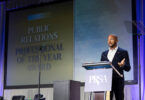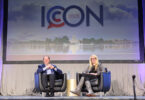Editor’s note: This is the fifth in a series of 12 guest posts from industry executives predicting key trends that will impact the public relations industry in 2012. Hosted under the hashtag #PRin2012, the series began Dec. 19, 2011, with a compilation post previewing all 12 predictions.
There is influence in everything an organization does, and sometimes in what it doesn’t do. (You have been influenced when you think something you wouldn’t otherwise have thought, or do something you wouldn’t otherwise have done.)
While influence is often considered the domain of marketing and PR, it is far more expansive. Whereas marketing describes the process of making and growing a profitable market, in partnership with PR’s mutual alignment of the organization with its stakeholders, a wider, unified perspective on influence is demanded.
The irreversible change wrought by social media and related technologies, and advances in business performance management, such as the Balanced Scorecard and strategy maps, require transformation of the organization’s structure, culture, skills, policies and processes to secure competitive advantage, or simply to maintain viability.
The task of tracking the six influence flows (the influence between an organization and all stakeholders, and between the competition and stakeholders), demands a new skill set and a new job role that I refer to as the “Influence Professional.” The Influence Professional leads the charge in sensitizing the organization to the new dynamic, and more adroitly than the competition.
These individuals are digitally native, highly numerate yet ambidextrous of mind. They recognize that the game is changed and champion the transformation. They execute a framework, such as the Influence Scorecard, to effectively “socialize the enterprise.”
Do you have what it takes to be an Influence Professional, or indeed the first breed of Chief Influence Officer?
Few candidates will bear the ideal equilibrium of mind and capability demanded of the Chief Influence Officer role. The majority of candidates will have a tendency toward left-brain talents, selecting their team to counterbalance accordingly. I find it difficult to envisage the opposite working, especially if the bias away from left-brain talents is such that it impairs the incumbent’s proficiency in systematically and scientifically transforming the organization’s approach to influence.
Ultimately, however, I’m optimistic that the core skills and traits of the PR professional make for a solid platform in considering the transition to Chief Influence Officer, but it’s time for PR professionals to build out their numeracy and analytical capabilities. Indeed, if information paucity characterized the 20th century marketing and PR, so-called “big data” is both the challenge and opportunity of the 21st.
Philip Sheldrake (@sheldrake) is the author of “The Business of Influence — Reframing Marketing and PR for the Digital Age,” (Wiley, 2011.) He chairs the Chartered Institute of Public Relations’ group on measurement and evaluation, and co-hosts CIPR TV. He is a chartered engineer and founding partner of Meanwhile, the venture marketers.







[…] the public relations industry in 2012.” Meanwhile’s Philip Sheldrake got to write the 5th one, reproduced […]
#2 is clear and concise. Insert “Management” between “strategic” and “communication and then add the phrase “in an ethical manner” at the end. These changes will reflect how PR is a management function and that practitioners should conduct themselves in an ethical manner at all times (as outlined in the PRSA Code of Ethics).
Let’s go with #2. Doesn’t sound like it was written by a committee. Goes to the fundamental of relationships, and of their mutuality.
“Ethics” is not needed in the definition. Of course it is an expectation of ourselves and of the society. But it is not definitional.
We are in the business of building bridges. I don’t want to quote any of these definitions if someone asks me what I do. To be honest, I usually joke and say I make other people famous, which most people understand.
I think the first definition does a good job of incorporating most parts of what PR is… however, a combination of all three would be best. There are various functions (management, marketing, engagement, research, communicating, etc, but there needs to be a mutually beneficial relationship between the agency and its publics while being ethical at the same time.
I like number one and two, but probably two the best. I think the “strategic” part, in strategic communication is very important.
My personal definition: “Public relations is strategic communications designed to protect and enhance the image and reputation of an organization, including its people, products and/or services.”
Very surprised about a number of issues:
1. I’ve always seen PR as the most powerful way to create “understanding” between the company and its constituents. Where is that word?
2. Public Relations has always suffered from its inability to be recognized as a powerful sales tool for company brands. Sadly, when the word “sales” gets added to any PR definition it begins to take on a sinister perspective. I believe that the PR function must define itself as an integral part of a company’s open and honest direct sales process.
3. As open social customer discourse grows, the accelerating role of PR driven community managers (PR customer enagememt specialists) should integrate the above points into the future definition of Public Relations.
I would say that using the Balanced Scorecard does require a change in organisational culture, but this may not be as difficult as many might think. Most organisations are used to creating scorecards containing KPIs (Key Performance Indicators), I have found that it is a small step to go from a basic metrics scorecard to a full blown balanced scorecard as inherently the concept of linking measures to objectives is just plain sensible! Tale a look at our started document on the subject; Developing Meaningful KPIs at https://www.intrafocus.com/key-performance-indicators/